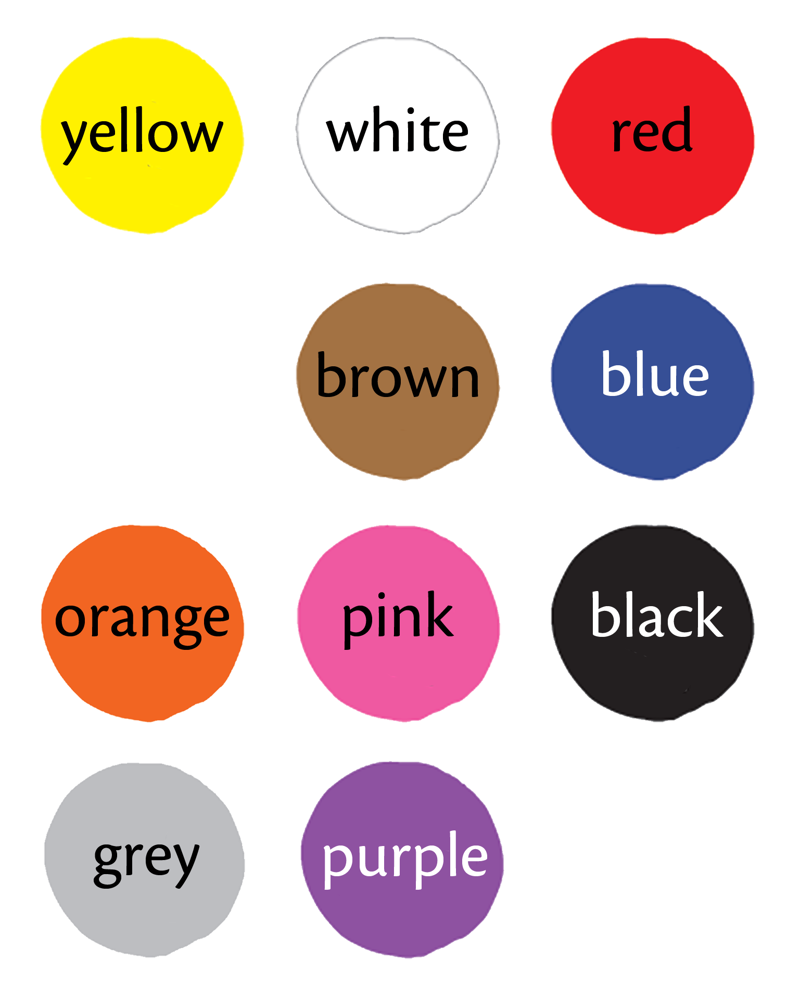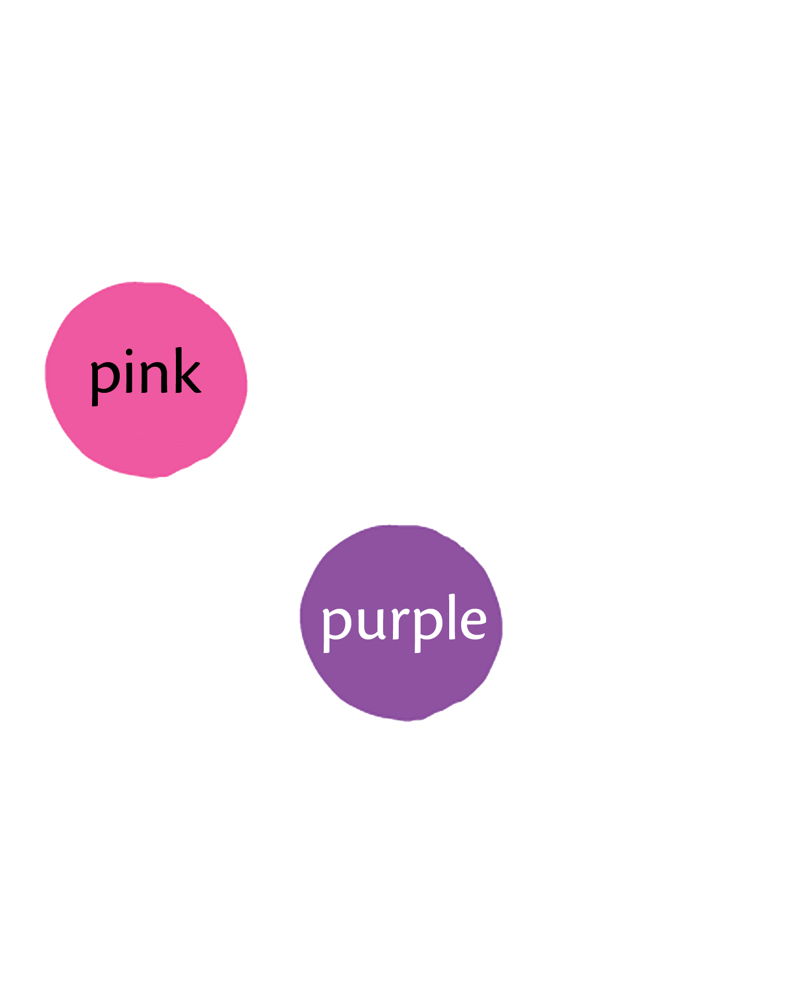Preparation
- colouring pencils (colours TB p. 9)
- colouring sheets/cards (see particular colours TB p. 9)
Lesson Stages
1. Warm-up, 10 min
2. Colours are everywhere, 25 min
3. Colours and sights, 10 min
Prior Knowledge and Skills
- greetings, farewells and introductions introductions
- the main landmarks of Great Britain
Lesson Aims and Outcomes
Pupils:
- learn colours
- find and identify colours in different objects (in school supplies, in the classroom, in the sightseeings, etc.)
Lesson Materials
- pp. 8–9
- pp. 8–9 ex. 3–5
- 1.2
- Kordamine. Londoni vaatamisväärsused ja sümbolid (1, 2)
Keywords and Techniques
- colours: pronunciation and spelling
- names of symbols (London, Great Britain)
- integrated skills: describe objects using new vocabulary
- types of activities: colouring by numbers, listening and choosing, labelling, word building, multi-choice
- classroom language
- colouring sheets, games
Integrated Subjects
- Natural Science
- Art
Cross Curricular Topics
- Values and morals
- Cultural identity
1. Warm-up
10
- Teacher’s greetings
- Revision: sights and symbols
Teacher’s greetings
- Start with the greetings (Hi! Hello! Good morning!)
Revision: sights and symbols
- Ask the kids if they remember the symbols of Great Britain. Do two exercises – Kordamine. Londoni vaatamisväärsused ja sümbolid (1, 2). Organise it as class work:
– read all the names aloud to the class or have the children say them as you point to each one;
– say one name aloud and ask a child which picture they would connect with it. The child may come up to the board to drag the name to the correct picture. Repeat this process with both a new name and a new child. - exercise 9 and 10 – have the children do the exercises in groups/pairs. Before starting, read the instructions as a class and make sure that everyone understands what to do.

2. Colours are everywhere
25
- Focus on vocabulary: colours
- Phonetic transcription, written form of the words
- Practising the new language
- Supplementary activity
Focus on vocabulary: colours
- Listen and repeat. slider with colours – listen to a colour name and have the children repeat it. Draw attention to its spelling.
- do ex. 4 to consolidate the new language – elicit the written form of the words.
- do ex. 3 p. 8 – organise the children into two/three groups. When you say the name of a colour, the groups take turns calling out the objects containing this colour.
At the end of the exercise, the class can analyse which of the groups was the most successful.
Phonetic transcription, written form of the words
- p. 9 – refer to the colours. Draw attention to the differences between the written form of a word and its phonetic symbols. Explain that a phonetic transcription will accompany each new word in the book. Transcription is a system of symbols used to define how written language is to be represented in spoken language. It is enclosed in square brackets [ ] or sometimes in angle brackets / /. In phonetic transcriptions, we pronounce all the sounds!
Information for the teacher. In the chapter "Sounds good!", you will have a chance to work thoroughly with particular sounds. For now, you can just simply give a brief overview. - Look through the words and their pronunciation, take two to three words and explain them in detail p. 9
red [red] – in this case, the written form and the phonetic transcription fully coincide;
blue [bluː] – four letters, three sounds, a long sound symbol, e is not pronounced;
black [blæk] – five letters, four sounds, the letter a has the phonetic symbol [æ], the letters ck have only one symbol [k]. - Give the children a minute to look at the words p. 9 and their transcription. After this, do the associated exercise Guess the word by its transcription.
Practising the new language
- Play the game Disappearing colours. It’s a nice game to remember new vocabulary. First, have the children answer the question What colour is it?, while pointing to the colours:
What colour is it?. When using slide A, their answer maybe may be: Blue or It’s blue.
Answer Key
1. Disappearing colours
B: green
C: red and black
D: grey, yellow and white
E: nothing is missing, but pink, purple and orange changed places
F: brown, blue and orange (the remaining colours – pink and purple)
2. ex. 4 p. 9
tomatoes: red
a bellflower: blue or purple
a snowman: white
a fir tree: green
bananas: yellow or green
chocolate: brown, white or black
- Challenge the children complete the following exercises on their own ex. 5 and 6
- ex. 4 p. 9 – children colour in the pictures and practise their writing skills using p. 9. Focus on accuracy. Monitor the children to check if they are doing the exercise correctly.
- ex. 5 p. 9 – children do this individual exercise.
Disappearing colours game
Allow the children 15 seconds to look at the colours (slide A). Move to the next slide and let the children identify which colours are missing. Sometimes you will have one, two or even three colours missing. Sometimes nothing is missing, but the colours may have changed places. Have the children name the remaining colours on the last slide.
You can also do this exercise with colouring sheets hanging on the board. This can be done by removing sheets instead of switching slides.
In this case, ask the children to close their eyes or turn away before removing a sheet.
Remove one to two colours and then let the children open their eyes or turn to the board.
Supplementary activity
- Hand out the colouring page "London" if you have additional time, want to give some homework if there are fast learners. Give the following instruction: use all of the 11 colours you have learned during the lesson.
- Crossword. For fast learners.
3. Colours and sights
10
- Integrated skills: looking for colours in landmarks
Integrated skills: looking for colours in landmarks
Develop the new vocabulary by describing places and objects.
Lesson description and homework
Lesson description
Learn colours: see TB p. 9. Identify colours in objects, focus on spelling. Revise the main landmarks of Great Britain. |
TB pp. 8–9/ AB pp. 8–9 ex. 3–5/ Opiq §1.2/ colouring sheet City |






